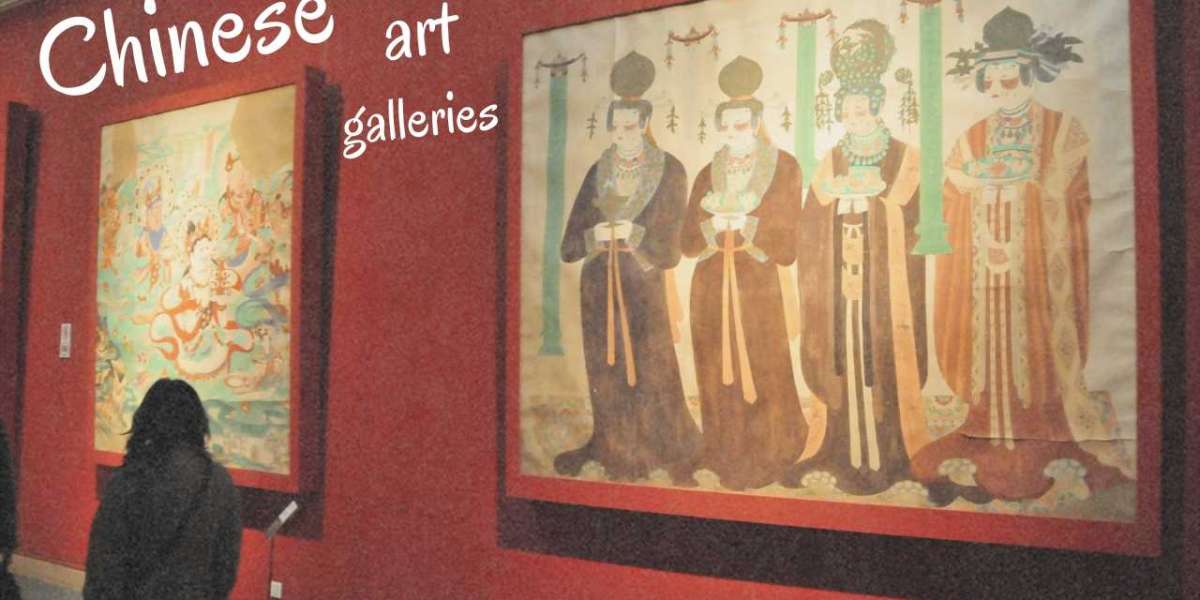Chinese art galleries are more than just spaces filled with exquisite artworks; they are cultural havens where history, philosophy, and tradition converge. Stepping into a Chinese art gallery is like embarking on a journey that takes you through the ages, from ancient dynasties to the modern day. Whether you are a seasoned art enthusiast or a curious newcomer, these galleries offer something for everyone. But what makes Chinese art galleries so special, and why should you make them a part of your artistic exploration?
The Rich History of Chinese Art Galleries
Chinese art galleries are treasures in themselves, housing works that date back thousands of years. From the ancient pottery and jade carvings of the Neolithic period to the intricate landscapes of the Song Dynasty, these galleries offer a glimpse into the evolution of Chinese civilization. The works displayed in Chinese art galleries represent not only the aesthetic sensibilities of each era but also the philosophical and cultural values that shaped them.
Walking through the corridors of a Chinese art gallery, you can trace the rise and fall of dynasties, the influence of Confucianism, Daoism, and Buddhism, and the changing tastes of emperors and scholars. The pieces in these galleries are often more than just beautiful objects—they are reflections of the political, social, and spiritual currents of their time. Whether it’s the vibrant hues of Ming Dynasty porcelain or the delicate brushstrokes of classical ink painting, each piece tells a story that transcends the canvas or sculpture.
The Diversity of Art Forms in Chinese Art Galleries
Chinese art galleries are a treasure trove of diverse art forms. The variety of media, techniques, and styles on display is truly astonishing. Calligraphy, painting, ceramics, sculpture, and even textiles all have their place in these galleries. For many visitors, the charm of Chinese art galleries lies in the intricate details and the philosophy behind each piece.
In particular, Chinese ink painting and calligraphy are central to understanding the cultural importance of these galleries. In ancient China, painting and calligraphy were considered intertwined disciplines, with both requiring not only technical skill but also moral and philosophical depth. When you visit a Chinese art gallery, you might find a painting of serene mountain landscapes that evoke Daoist ideals of harmony between man and nature, or a portrait that demonstrates the Confucian virtues of filial piety and respect.
Similarly, the ceramic works displayed in Chinese art galleries—ranging from Tang Dynasty tomb figurines to the exquisite blue-and-white porcelain of the Ming era—offer a unique look into China's history and craftsmanship. These artifacts, often painstakingly crafted and decorated with rich symbols, serve as both functional objects and artistic statements. The ceramics displayed in Chinese art galleries give a sense of the country’s enduring legacy of innovation and creativity.
Modern Chinese Art Galleries: Bridging Tradition and Innovation
While traditional Chinese art continues to be an essential part of Chinese art galleries, the modern era has brought forth exciting developments that are transforming the art scene. Contemporary Chinese artists are pushing boundaries and experimenting with new techniques and mediums, often blending traditional elements with modern sensibilities.
In modern Chinese art galleries, you can witness a dynamic fusion of the old and the new. You might find a traditional ink painting that incorporates modern abstraction, or a sculpture that combines ancient materials with cutting-edge technology. Chinese art galleries dedicated to contemporary art offer visitors an exciting view of the ongoing dialogue between tradition and innovation in the realm of visual culture. This space for creativity reflects the globalized world in which China’s art is now flourishing, with artists increasingly exploring universal themes like identity, urbanization, and globalization while still referencing their cultural heritage.
The Role of Chinese Art Galleries in Cultural Exchange
Chinese art galleries play a crucial role in the cultural exchange between East and West. Over the past few decades, as China has grown in global influence, its art has gained a prominent place on the international stage. Many Chinese art galleries now host exhibitions that travel worldwide, bringing Chinese art to global audiences. Likewise, Western and international artists are often invited to exhibit their work in Chinese galleries, allowing for a rich exchange of ideas and artistic influences.
By visiting Chinese art galleries, you not only experience the richness of Chinese artistic traditions but also become a part of a larger, ongoing dialogue about the universal power of art. These galleries act as bridges, connecting people from different cultures and backgrounds through the shared language of creativity. Whether it's a historical scroll from the Qing Dynasty or a contemporary piece that challenges our perceptions of reality, the art in Chinese galleries speaks to the human experience in ways that transcend borders.
How to Make the Most of Your Visit to Chinese Art Galleries
Visiting Chinese art galleries is a rewarding experience, but it can also be overwhelming, especially for those who are not familiar with the culture or the history behind the pieces. To make the most of your visit, take the time to read the accompanying descriptions and labels, which often provide context about the artwork’s origins and significance. Many Chinese art galleries also offer guided tours or multimedia presentations that can enhance your understanding of the exhibits.
If you're visiting a gallery known for its traditional Chinese art, take a moment to contemplate the philosophy behind the works. Chinese art is not just about visual appeal—it often carries deeper meanings rooted in the spiritual beliefs and social values of the time. For example, in a painting of a bamboo grove, you might discover a metaphor for resilience and integrity, qualities admired in Confucian thought.
Modern Chinese art galleries may offer more experimental pieces, but don’t let the unfamiliarity of contemporary art deter you. Whether it's through bright colors, abstract shapes, or digital media, modern Chinese art challenges viewers to think in new ways. By embracing both traditional and contemporary works, you can gain a fuller appreciation of the rich and evolving artistic landscape in China.
Conclusion: The Timeless Allure of Chinese Art Galleries
Chinese art galleries are windows into the soul of a civilization that spans millennia. From the ancient treasures of the Tang Dynasty to the bold innovations of contemporary Chinese artists, these galleries showcase the immense depth and diversity of China's cultural heritage. Visiting a Chinese art gallery is more than just a chance to see beautiful objects—it’s an opportunity to experience the history, philosophy, and creativity that continue to shape China today.
Whether you are drawn to the intricate details of ancient ceramics, the tranquility of landscape paintings, or the thought-provoking experimentation of modern art, Chinese art galleries offer something for every art lover. So, the next time you step into a Chinese art gallery, remember that you are not just looking at art—you are looking at a piece of history, culture, and human experience.













